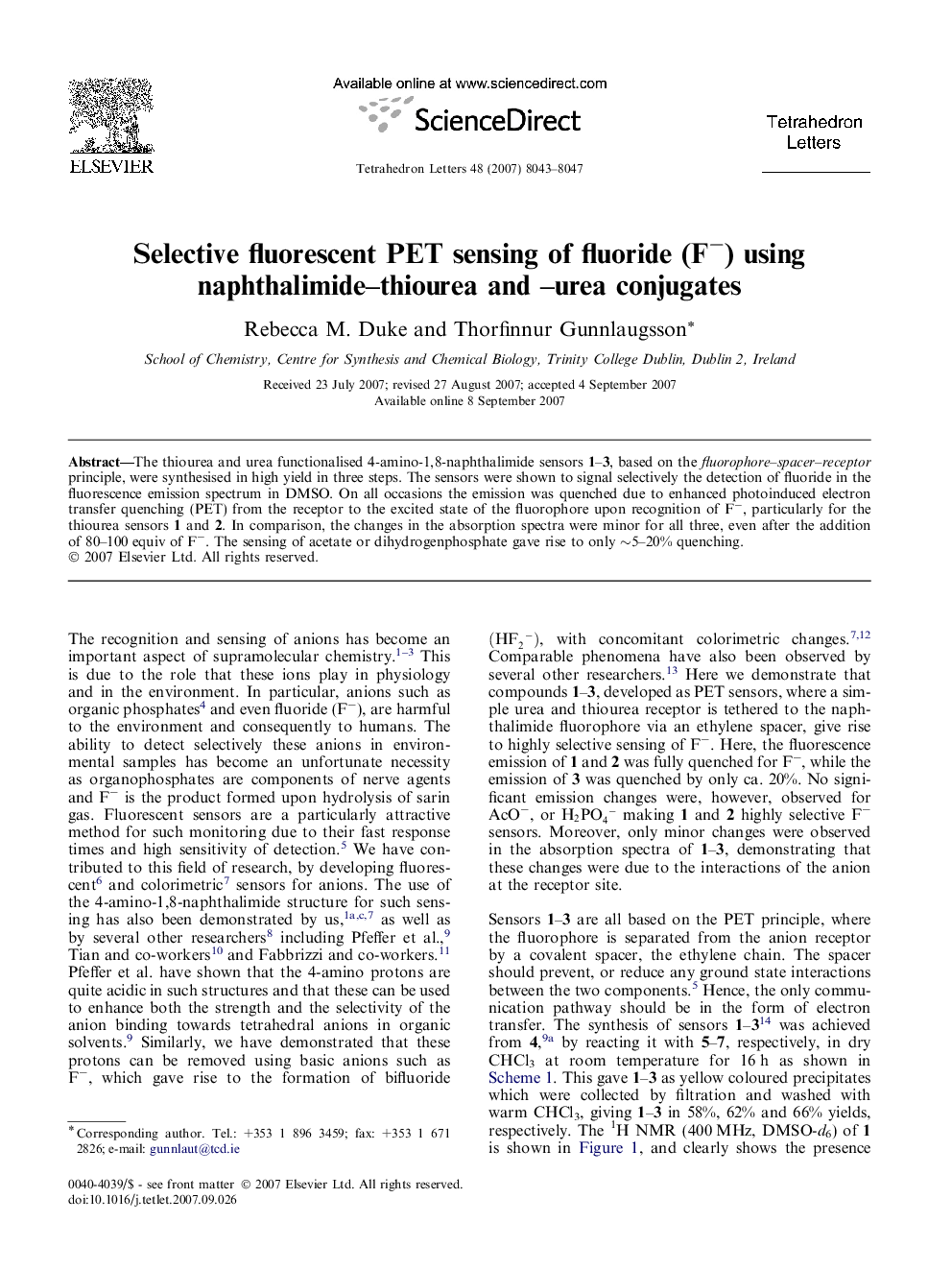| Article ID | Journal | Published Year | Pages | File Type |
|---|---|---|---|---|
| 5278963 | Tetrahedron Letters | 2007 | 5 Pages |
The thiourea and urea functionalised 4-amino-1,8-naphthalimide sensors 1-3, based on the fluorophore-spacer-receptor principle, were synthesised in high yield in three steps. The sensors were shown to signal selectively the detection of fluoride in the fluorescence emission spectrum in DMSO. On all occasions the emission was quenched due to enhanced photoinduced electron transfer quenching (PET) from the receptor to the excited state of the fluorophore upon recognition of Fâ, particularly for the thiourea sensors 1 and 2. In comparison, the changes in the absorption spectra were minor for all three, even after the addition of 80-100Â equiv of Fâ. The sensing of acetate or dihydrogenphosphate gave rise to only â¼5-20% quenching.
Graphical abstractDownload full-size image
